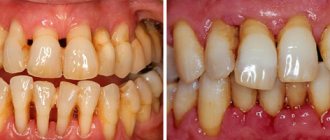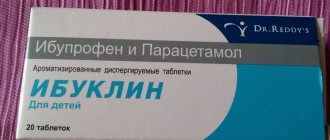Diclofenac in different forms of release: indications for use
Medicine in tablets, injections, ointments, gels, suppositories can be used for short-term suppression of painful sensations that arise as a consequence of:
- osteochondrosis, rheumatic tissue lesions, osteoarthrosis, arthritis;
- sciatica, peripheral nerve damage, lumbago;
- gout, migraines;
- inflammation in the pelvic area, injuries and surgical interventions.
Suppositories are prescribed as an addition to the main therapy for complex inflammatory processes such as otitis, laryngitis, and pharyngitis.
Injection administration of Diclofenac according to the instructions is recommended to obtain a quick analgesic effect. The drug is administered for renal and hepatic colic, acute pain syndrome in damaged muscles, after surgery. Prevention and treatment of postoperative discomfort is carried out by intravenous infusion of Diclofenac.
Eye drops are prescribed to patients:
- to prevent inflammation and swelling during surgical interventions;
- with penetrating and non-penetrating injuries of the eyeballs;
- to suppress discomfort during laser vision correction.
What does Disclofenac tablets help with: the indications are similar to the injectable forms of the medication. It is sometimes used to relieve toothache. Gel and ointment are used to treat disorders of the locomotor system, rectal suppositories are used when it is impossible to take the medication orally.
Suppositories are safer and are not capable of causing complications from parenteral administration of Diclofenac: necrosis, infiltrates, suppuration at the needle entry site. Suppositories are used in combined regimens: tablets or injections are prescribed during the day, and rectal medications are prescribed at night. In gynecological practice, suppositories are prescribed for acute pain syndrome that occurs against the background of an inflammatory process in the ovaries or painful menstruation.
Diclofenac, 20 pcs., 50 mg, enteric-coated tablets
In order to reduce the risk of adverse events, the drug should be used at the lowest effective dose for the shortest period necessary to relieve symptoms.
Therapy with NSAIDs, including diclofenac, particularly long-term and high-dose therapy, may be associated with a small increased risk of serious cardiovascular thrombotic events (including myocardial infarction and stroke).
In patients with significant risk factors for cardiovascular events (eg hypertension, hyperlipoproteinemia, diabetes mellitus and smoking), treatment with diclofenac-containing products should only be initiated after careful evaluation and analysis.
Because of the important role of prostaglandins in maintaining renal blood flow, special caution should be exercised when prescribing the drug to patients with cardiac or renal failure, hypertension, elderly patients, patients taking diuretics or other drugs that affect renal function, and patients with For some reason, there is a decrease in circulating blood volume (for example, after extensive surgery). If diclofenac is prescribed in such cases, monitoring of renal function is recommended as a precaution. After cessation of drug therapy, normalization of renal function indicators to initial values is usually observed.
When using diclofenac, phenomena such as bleeding or ulceration/perforation of the gastrointestinal tract, in some cases fatal, were observed. These phenomena may occur at any time when using the drug in patients with or without previous symptoms and a history of serious gastrointestinal diseases. In elderly patients, such complications can have serious consequences. If patients receiving diclofenac develop bleeding or ulceration of the gastrointestinal tract, the drug should be discontinued. To reduce the risk of toxic effects on the gastrointestinal tract, the drug should be used in the minimum effective dose for the shortest possible time, especially for patients with gastrointestinal ulcers. especially complicated by bleeding or perforation in history, as well as elderly patients.
Patients with an increased risk of developing gastrointestinal complications, as well as those receiving therapy with low doses of acetylsalicylic acid or other drugs that can increase the risk of damage to the gastrointestinal tract, should take gastroprotectors.
Patients with a history of gastrointestinal disorders, especially the elderly, should report all symptoms of the digestive system to their doctor.
When carrying out long-term therapy, it is necessary to monitor liver function, peripheral blood patterns, and stool analysis for occult blood.
With long-term use of diclofenac, there may be an increase in the activity of one or more liver enzymes. If liver dysfunction persists or progresses or signs of liver disease or other symptoms occur (for example, eosinophilia, rash, etc.), the drug should be discontinued. It should be borne in mind that hepatitis during the use of diclofenac can develop without prodromal phenomena.
Caution must be exercised when using diclofenac in patients with hepatic porphyria, since the drug can provoke attacks of porphyria.
Diclofenac can reversibly inhibit platelet aggregation, therefore, in patients with hemostasis disorders with long-term use, careful monitoring of relevant laboratory parameters is necessary.
In patients with bronchial asthma, seasonal allergic rhinitis, swelling of the nasal mucosa (including nasal polyps), chronic obstructive pulmonary disease, chronic respiratory tract infections (especially those associated with allergic rhinitis-like symptoms), as well as in patients with allergies to other medications (rash, itching, urticaria) when prescribing diclofenac, special care should be taken (preparedness for resuscitation measures).
Severe, in some cases fatal, skin reactions, including exfoliative dermatitis, Stevens-Johnson syndrome, toxic epidermal necrolysis, have been very rarely reported with the use of diclofenac. The highest risk and incidence of severe dermatological reactions were observed in the first month of treatment with diclofenac. If patients receiving the drug develop the first signs of skin rash, damage to the mucous membranes or other symptoms of hypersensitivity, diclofenac should be discontinued.
The anti-inflammatory effect of NSAIDs, including diclofenac, may complicate the diagnosis of infectious processes.
Due to the negative effect on fertility, the drug is not recommended for women planning pregnancy. In patients with infertility (including those undergoing examination), it is recommended to discontinue the drug.
Contraindications and non-standard reactions from Diclofenac
The instructions indicate that the medication is not prescribed:
- in case of individual intolerance to the component composition;
- bleeding from the gastrointestinal tract, ulcers, perforation and inflammation of the digestive canal;
- bronchial asthma arising under the influence of NSAIDs;
- liver, kidney, heart failure.
Diclofenac is contraindicated for proctitis (in suppositories), after coronary artery bypass surgery, during pregnancy and for children under 6 years of age. Ointments and gels are not used for skin damage. Suppositories and tablets are prescribed to patients over 14 years of age. Increased caution is needed when treating patients with herpetic keratitis, children, the elderly, and nursing women.
The following side effects may occur when taking tablets:
- dyspeptic disorders;
- erosions and ulcers of the gastrointestinal tract;
- bleeding in the digestive tract;
- drowsiness, unreasonable irritability;
- attacks of dizziness, allergies.
Diclofenac drops can provoke:
- burning, cloudiness of the cornea;
- decreased visual acuity (temporary);
- allergies, iritis.
Intramuscular administration of the drug is sometimes accompanied by unpleasant sensations, and in difficult cases leads to tissue necrosis and abscess.
Composition and features
Diclofenac is available in several dosage forms. Apply ointment or gel externally.
The substance is diclofenac sodium, its concentration in the ointment is 10 or 20 mg per 1 g, in the gel - 10 or 50 mg per 1 g. Accordingly, the gel can be 1 or 5 percent, and the ointment 1 or 2 percent.
The auxiliary components in the gel are alcohol, propylene glycol, lavender oil, purified water and hyaetellose. The ointment additionally contains propylene glycol, dimethyl sulfoxide and macrogol.
The gel is a homogeneous transparent substance with a slight yellow tint or no color, there is a specific odor, the base is water.
The basic component of the ointment is fat; it has a thicker consistency. Therefore, it is better to use a gel for joints and deep layers of the epidermis. It spreads more easily and dries faster, does not leave stains on clothes and creates a protective film on the skin.
If the skin at the site of application is irritated and prone to peeling, then it is better to use ointment, as it additionally softens and moisturizes the skin at the site of application.
Can the product be used by pregnant women and children?
Pregnancy, especially the third trimester, is a contraindication to the use of Diclofenac. If treatment with the drug is necessary in the first half of pregnancy, the doctor is obliged to evaluate all the negative consequences for the fetus and the expected benefits for the woman.
The ability of the drug to pass into breast milk has not been studied, so treatment is not advisable during breastfeeding. If there are serious reasons to use a gel or ointment during lactation, do not apply the substance to large areas of the skin and do not treat it for a long time.
In pediatric practice, it is used in the treatment of children only from 12 years of age.
How to use Diclofenac gel
Instructions for use of Diclofenac gel contain detailed information on doses and methods of use of the medicine.
The gel is used only externally in adults and children over 12 years of age according to indications. Apply to the site of inflammation with light rubbing movements 2 or 3 times a day. For one application, 2 g of the drug is enough, which corresponds to a strip of 4 cm.
The maximum permissible dose per day is no more than 6 g. Duration of therapy is no more than two weeks, longer periods are possible in agreement with the attending physician. Be sure to wash your hands after using Diclofenac.
How to use Diclofenac ointment
According to the instructions for use of Diclofenac ointment, the product in a volume of 2-4 g is distributed over the skin at the site of pain, using a slight rubbing motion. It is allowed to use the ointment 2-3 times a day, but the maximum dose should not exceed 8 g.
Children 6-12 years old are allowed to use the ointment no more than twice a day. When determining it, take into account the fact of simultaneous use of diclofenac drugs in other dosage forms (for example, tablets or suppositories).
Duration of therapy is up to 14 days.
Use in drug addicts
Diclofenac belongs to the group of non-narcotic analgesics (unlike morphine, codeine, fentanyl and tramadol).
Even in large doses, it is not a psychoactive drug and has no addictive potential, that is, with short- or long-term use it does not cause either physiological or psychological dependence. However, you should be aware that diclofenac can delay the active breakdown products of morphine in the blood. This is important to remember for those taking morphine - a side effect such as respiratory depression may occur.
pharmachologic effect
Diclofenac is a representative of the group of non-steroidal anti-inflammatory drugs.
Reduces the production of arachidonic acid and disrupts the synthesis of prostaglandins, therefore it has a triple effect:
- relieves inflammation;
- relieves pain;
- reduces high temperature.
When used externally, it reduces pain in joints both at rest and during movement, relieves swelling and stiffness in the morning, and allows you to increase physical activity.


